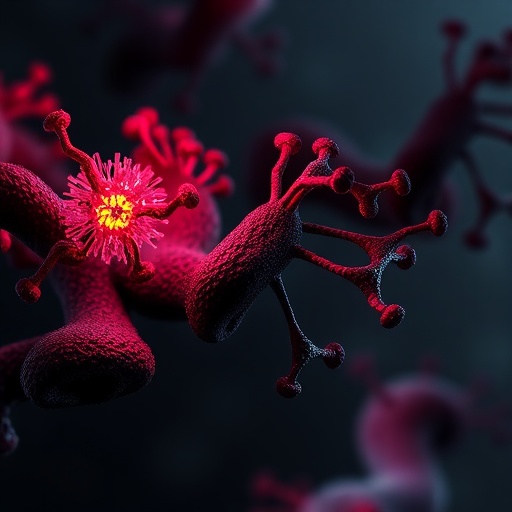Where and when teens have sex matters for condom use
(NEW YORK) January 29, 2019 — A study conducted by Columbia Mailman School of Public Health and the Muhimbili University of Health and Allied Sciences (MUHAS) in Tanzania sheds light on the factors that influence young people’s access to and use of alcohol, and subsequent engagement in safe or unsafe sexual behaviors. The results showed that alcohol use intersects with a spatial dimension in relation to where youths are consuming alcohol and subsequently engaging in sex which, in turn, influences their likelihood of using condoms and practicing safer sex. The findings are published online in the Archives of Sexual Behavior.
“Our study aimed to understand the spaces in which young people are engaging in sex after drinking alcohol, the ways in which space is influenced by social and cultural perspectives and the economic realities of their lives and, that in turn, influence their likelihood of using condoms in such contexts,” said first author Marni Sommer, DrPH, RN, associate professor of Sociomedical Sciences at Columbia Mailman School.
The researchers explored the experiences and perspectives of 177 adolescent girls and boys in and out of school in four sites across Dar es Salaam, Tanzania. These included in-depth interviews with the adolescents as well as adults; mapping alcohol density outlets and advertising around schools and youth centers, and participatory activities conducted with adolescent boys and girls in and out of school.
Very frequently described spaces for sex after alcohol included guesthouses and rented rooms–both articulated as spaces more likely to be used when there was some advance planning or preparation with regard to the likelihood of a sexual encounter after drinking. Young people said these spaces were preferred for their convenience, comfort, and for the ready availability of condoms. By contrast, youth described a range of situations in which they might have sex after drinking and no condoms would be available, such as cars, toilets in bars, the beach, classrooms after school, and alleys.
Young people described gendered norms around adolescent girls’ ability to be away from home, with the expectation that they return to their houses by a certain hour, added an additional pressure of time that pushed for more rushed sex in whatever convenient spaces might exist after drinking. Poorer youth may also be more likely to engage in “rushed sex” due to cost of safer spaces, such as guesthouses.
The alcohol context in Tanzania, as in many sub-Saharan African countries, has been under-studied, despite data indicating heavy episodic drinking (21 percent males; 14 percent females) among Tanzanians. Sommer and colleagues felt it was important to conduct research to better understand the ways in which the use of alcohol among young people in urban areas of sub-Saharan Africa, particularly those with a high-density of alcohol outlets, is intersecting with their sexual encounters, and how this dynamic is influencing the practice of safer sex.
An earlier study led by Sommer and Dr. Sylvia Kaaya at MUHAS of adolescent boys in rural and urban Tanzania revealed the intense peer pressure boys experience from older adolescent boys and men to consume alcohol to demonstrate their manhood, and how the use of alcohol helped them to overcome their shyness around approaching or “seducing” girls.
Unique to the latest study was the inclusion of adolescent girls and boys in a range of participatory activities, such as photovoice, mapping, and story writing, that enabled insights into the alcohol-sex dynamics from the perspectives of young people themselves.
Sommer recommends that future research identify new and innovative ways to assure that condoms are more widely accessible for youth engaging in sex. She also sees a critical need for structural and environmental interventions that both reduce youth access to alcohol, and increase the availability and accessibility of condoms in spaces and situations where alcohol is sold or consumed.
“It is key to keep youth at the center of public health research focused on improving their sexual and reproductive health,” said Sommer. “They are the knowers of their own lives, and often have the most useful insights for how to best address the vulnerabilities they encounter in daily life.”
###
The study was supported by the National Institutes on Alcohol Abuse and Alcoholism.
Columbia University Mailman School of Public Health
Founded in 1922, the Columbia University Mailman School of Public Health pursues an agenda of research, education, and service to address the critical and complex public health issues affecting New Yorkers, the nation and the world. The Columbia Mailman School is the third largest recipient of NIH grants among schools of public health. Its over 450 multi-disciplinary faculty members work in more than 100 countries around the world, addressing such issues as preventing infectious and chronic diseases, environmental health, maternal and child health, health policy, climate change & health, and public health preparedness. It is a leader in public health education with over 1,300 graduate students from more than 40 nations pursuing a variety of master’s and doctoral degree programs. The Columbia Mailman School is also home to numerous world-renowned research centers, including ICAP and the Center for Infection and Immunity. For more information, please visit http://www.
Media Contact
Stephanie Berger
[email protected]
212-305-4372
http://dx.




